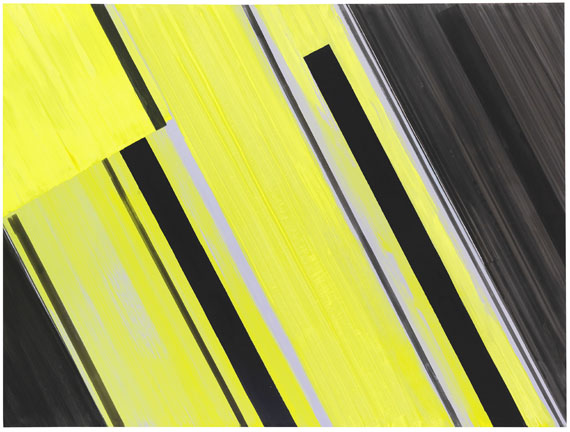Dictionary


Concrete Art before 1945
Concrete art developed in the 1920s in conscious opposition to abstract art. A comparison of both art forms, reveals the revolutionary and radical demands of concrete art. Concrete art drew from the same abstract and pictorial means as geometric abstract art. The former, however, was not an abstraction of any object and thus made no reference to the material world. The angles, lines, and clearly defined geometric fields of colour, referred only to themselves, thus creating their own artistic reality, intrinsic to the painting. In addition, according to G.W.F. Hegel, the spiritual act of artistic production was given visual expression in clearly structured work. Concrete art was also characterised by the notion that the pictorial mediums of colour, line, surface and space are laid out according to logical rules.
Although Theo van Doesburg (1883-1931) coined the term "Concrete Art" in 1924, it first gained a theoretical basis when the Art Concret group - which included Jean Hélion, Léon Tutundjian and Marcel Wantz - was founded in 1930. Theo van Doesburg published the concrete art manifesto in the first and only edition of the journal, Art Concret, which stated that a pictorial element had no intrinsic meaning, outside itself and thus a painting also had no external meaning beyond itself.
The main exponents of concrete art in the 1930s were Art Concret and the Abstraction-Création group, founded in 1931. The pioneering impulses of concrete art were particularly influential in Switzerland, and practised by groups such as the Zurich Concretists and the Allianz group. The most important Swiss concrete artists were Max Bill, Camille Graeser and Richard Paul Lohse. This active exchange of artistic ideas continued post-1945, and developed beyond the boundaries of concrete art, impacting on artistic movements such as Hard Edge and Colour Field painting.
Concrete art developed in the 1920s in conscious opposition to abstract art. A comparison of both art forms, reveals the revolutionary and radical demands of concrete art. Concrete art drew from the same abstract and pictorial means as geometric abstract art. The former, however, was not an abstraction of any object and thus made no reference to the material world. The angles, lines, and clearly defined geometric fields of colour, referred only to themselves, thus creating their own artistic reality, intrinsic to the painting. In addition, according to G.W.F. Hegel, the spiritual act of artistic production was given visual expression in clearly structured work. Concrete art was also characterised by the notion that the pictorial mediums of colour, line, surface and space are laid out according to logical rules.
Although Theo van Doesburg (1883-1931) coined the term "Concrete Art" in 1924, it first gained a theoretical basis when the Art Concret group - which included Jean Hélion, Léon Tutundjian and Marcel Wantz - was founded in 1930. Theo van Doesburg published the concrete art manifesto in the first and only edition of the journal, Art Concret, which stated that a pictorial element had no intrinsic meaning, outside itself and thus a painting also had no external meaning beyond itself.
The main exponents of concrete art in the 1930s were Art Concret and the Abstraction-Création group, founded in 1931. The pioneering impulses of concrete art were particularly influential in Switzerland, and practised by groups such as the Zurich Concretists and the Allianz group. The most important Swiss concrete artists were Max Bill, Camille Graeser and Richard Paul Lohse. This active exchange of artistic ideas continued post-1945, and developed beyond the boundaries of concrete art, impacting on artistic movements such as Hard Edge and Colour Field painting.
Offers
Headquarters
Joseph-Wild-Str. 18
81829 Munich
Phone: +49 89 55 244-0
Fax: +49 89 55 244-177
info@kettererkunst.de
Louisa von Saucken / Undine Schleifer
Holstenwall 5
20355 Hamburg
Phone: +49 40 37 49 61-0
Fax: +49 40 37 49 61-66
infohamburg@kettererkunst.de
Dr. Simone Wiechers / Nane Schlage
Fasanenstr. 70
10719 Berlin
Phone: +49 30 88 67 53-63
Fax: +49 30 88 67 56-43
infoberlin@kettererkunst.de
Cordula Lichtenberg
Gertrudenstraße 24-28
50667 Cologne
Phone: +49 221 510 908-15
infokoeln@kettererkunst.de
Hessen
Rhineland-Palatinate
Miriam Heß
Phone: +49 62 21 58 80-038
Fax: +49 62 21 58 80-595
infoheidelberg@kettererkunst.de
We will inform you in time.




